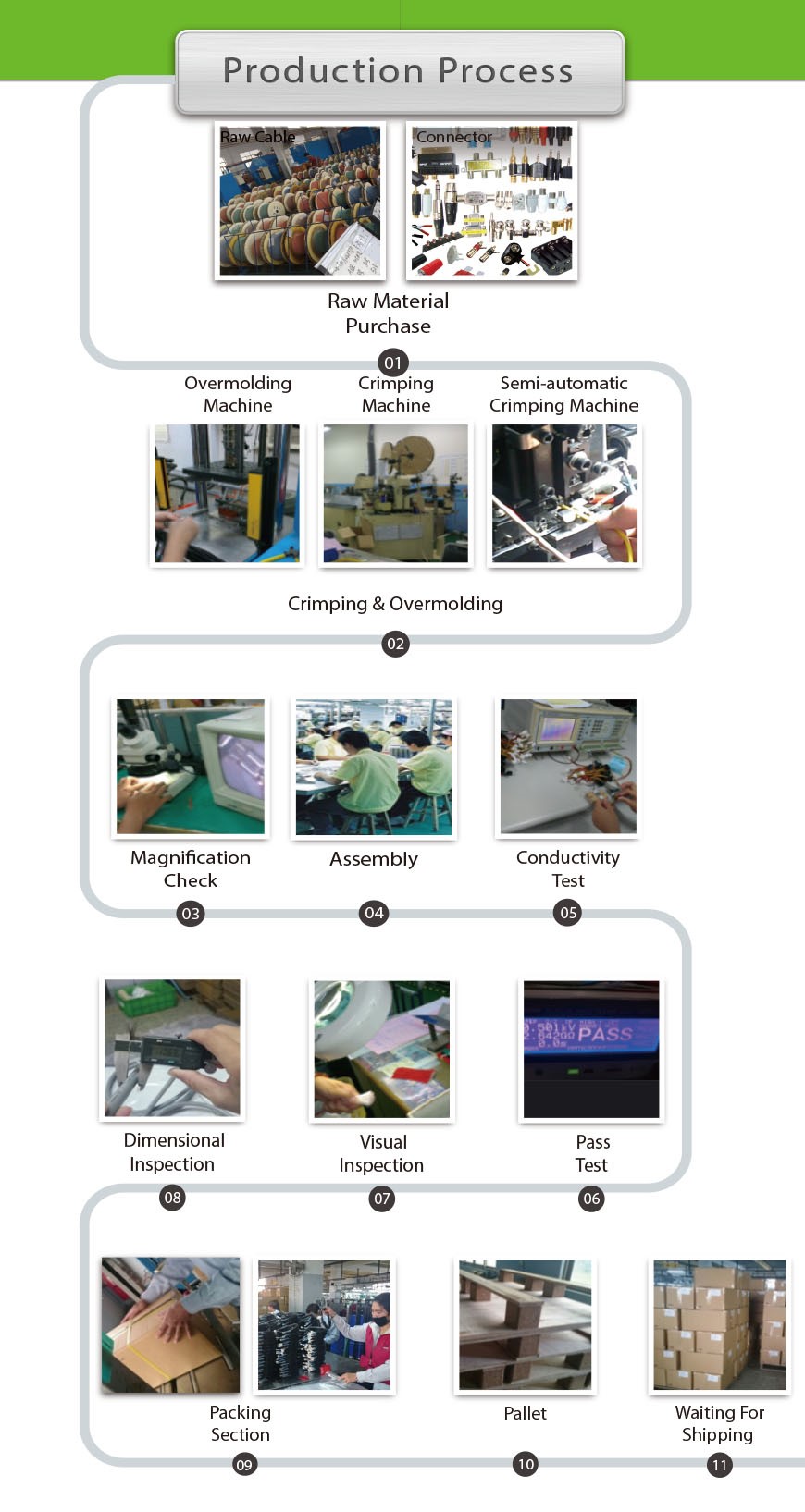
| Product Name | Hirose DF19 20pin 1mm to Hirose DF13 30pin 1.25mm Pitch Custom LVDS Cable Assembly |
| Compliance | RoHS |
| Conductors | 30 + 20 |
| Connector A | Hirose DF13-30DS-1.25C (Original/Equivalent) |
| Connector B | Hirose DF19G-20S-1C (05) (Original/Equivalent) |
| Cable | UL1571 28 awg x 4P + 8C |
| MOQ | 100 Pieces |
| Lead-Time | 2~4 Weeks |













1. How to choose a Right Cable?
A designer has to evaluate the determining system parameters such as signaling rate, cable length, single-ended or differential (balanced) signaling, point-to-point, multidrop or multipoint configuration, noise margin, flexibility, and costs.
2. What’s Will Impact the Material You Select?
Specific equipment, machine structure, and environment.
3. Regarding number 2, what should be concerned?
Unshielded or shielded (taped, braided, or combination of both)?
Round or flat? Coaxial, multiconductor or twisted pair cable?
4. Why cable needs to be shielded?
To reduce electrical noise from affecting the signals and to reduce electromagnetic radiation that may
Interfere with other devices.
5. What sort of cable need suggest to?
A braided or served shield is recommended to ensure good isolation between the signal lines and the environment.
6. Does double-shielded cable that is taped and braided typically perform better?
Yes.
7. What kind of cable is cheaper and easier to handle?
Multiconductor cables are cheaper and easier to handle than twisted pair or coaxial cables, especially in terms of termination.
8. What is your recommendation for differential data transmission, such as LVDS?
The twisted pair cable is recommended since it provides two identical conductors to transmit the signal and its complement.

Are you from the EU regions?
Taiwantrade.com and iDealEZ.com uses analytical cookies and other tracking technologies to offer you the best possible user experience. By using our website, you acknowledge and agree to our cookie policy.
For more information on cookies or changing your cookies settings, read Taiwantrade & iDealEZ’s Privacy Policy.